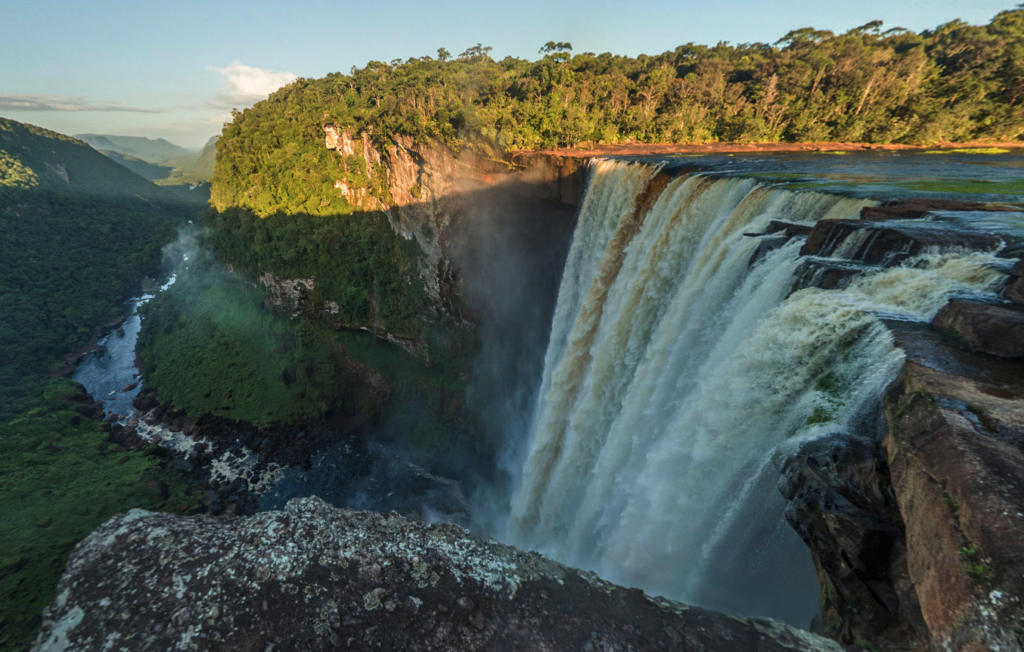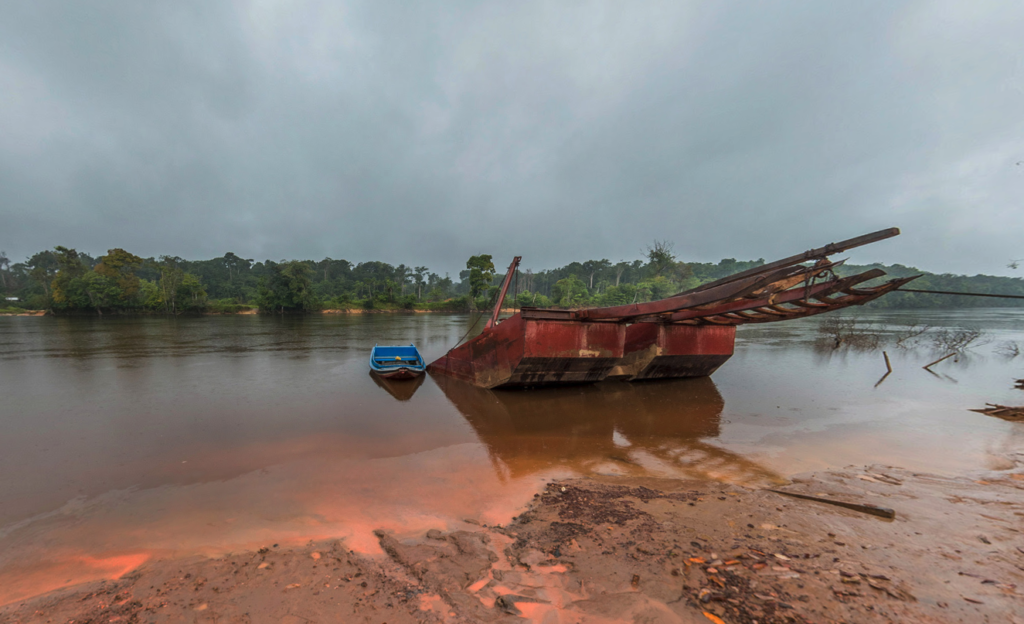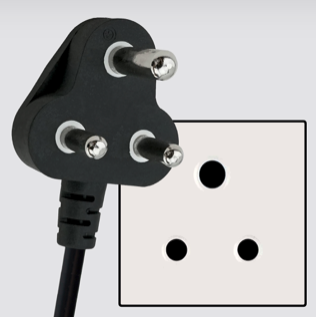Guyana / Co-operative Republic of Guyana – Let’s explore here
What’s it like in Guyana?
Guyana is a densely forested country in South America, slightly smaller than the United Kingdom. It has a population of around 800,000 people, making it one of the least densely populated countries on Earth. The capital, Georgetown, has a population of around 120,000.
The terrain consists of a coastal marshy strip where the majority of the people live, a sandy hills region, savannah and dense, near-inaccessible Amazon rainforest which gradually rises as it nears the Brazilian border. Guyana’s highest peak is the flat topped mountain, Mount Roraima, at 9,094 ft (2,772 m) above sea level. Kaieteur Falls, roughly in the middle of the country, is the largest single drop waterfall in the world.
It gained independence from Britain in 1966. Its neighbours are Brazil, Suriname and Venezuela.
Guyana’s economy has undergone a dramatic transformation since the discovery of crude oil in 2015, making it currently the world’s fastest-growing economy. Guyana is on course to become one of the largest per capita oil producers in the world by 2030.


A bit about the history of Guyana
Guyana’s history is shaped by Indigenous cultures, European colonisation, slavery, the struggle for independence, and its emergence as a democratic republic.
European colonisation
Before European arrival, Guyana was inhabited by several Indigenous groups, including the Arawak, Carib, and Warao peoples, who had established complex societies and systems of trade and agriculture. In the early 16th century, Spanish explorers arrived, but it was the Dutch who established the first European colonies in the region in the 17th century, founding settlements such as Essequibo and Demerara.
In the 19th century, Guyana was under British control after the British took over the Dutch colonies in the early 1800s. The region became known as British Guiana. During British rule, the economy was based on sugar, rice, and other agricultural products, with a large labor force made up of enslaved Africans. After slavery was abolished in 1834, indentured laborers from India were brought to work on the plantations, leading to significant demographic changes and a lasting Indo-Guyanese presence in the country.
Struggle for independence
The struggle for independence grew in the mid 20th century as nationalist movements began to gain momentum. British Guiana gained self-government in 1953, but it wasn’t until 1966 that the country achieved full independence from Britain, becoming the Co-operative Republic of Guyana. The first prime minister, Forbes Burnham, became president following independence and led the country for several decades, steering it toward a socialist-oriented economy and a one-party state.
Civil unrest and democracy
Guyana experienced periods of political instability and ethnic tensions, particularly between the Afro-Guyanese and Indo-Guyanese populations. These tensions were fueled by competition for power and resources, leading to violence and unrest at times. In the 1980s and 1990s, the country shifted toward a more democratic system, and subsequent elections brought power-sharing arrangements between the two main ethnic groups.
Today, Guyana is a democratic republic, with a growing economy, largely driven by its oil and gas reserves. While the country has made significant strides in improving its infrastructure and social services, challenges like political polarisation, economic inequality, and environmental concerns remain.


Guyana road trip
Our Guyanese road trip is part of a much larger South American road trip.
Map of our road trip through Guyana

Our current planned road trip in Guyana takes us from Brazil towards the capital, Georgetown, before heading back into Brazil, and on to Venezuela.
No doubt this Pan-South American route will change once we reach Guyana, so that we can explore the country in more depth.
Hopefully our journey will improve our knowledge of this intriguing and beautiful country, and enable us to meet some interesting people. We’ll be updating this page at that time – don’t forget to check back
What’s it like to drive in Guyana?
They drive on the left hand side of the road in Guyana. Most roads are in poor condition, and driving standards are also poor.
Do you require an international driving permit in Guyana?
We’ve created a dedicated page to driving abroad, which answers this question, and more, which you might find helpful.
Can you use your UK driving license when driving through Guyana?
We’ve created a dedicated page to driving abroad, which answers this question, and more, which you might find helpful.
Do I need a carnet de passages to drive in Guyana?
We’ve created a dedicated page to driving abroad, which answers this question, and more, which you might find helpful.
What currency do they use in Guyana?
In Guyana they use the Guyanese Dollar. Cash is widely used. The use of credit / debit cards is only accepted in tourist areas. Travellers cheques are not generally accepted. There are some ATMs in tourist areas, although not all accept foreign issued cards.
You should make yourself aware of the amount that your bank charges you for using credit and debit cards abroad. Often credit cards are cheaper for purchasing items directly, and for withdrawing cash from ATMs.
What language do they speak in Guyana?
They speak English in Guyana. Guyanese Creole is also widely spoken throughout the country.
What time zone is Guyana in?
Remember, when you’re planning your next trip to take a look at what time zone it’s in.
Do I need a visa to visit Guyana?
We’ve created a dedicated, more comprehensive page on visas, which you should find helpful. Check it out!
Is wild camping legal in Guyana?
Yes, wild camping is fine in Guyana, although make sure the land is not private.
What plug / socket type do they use in Guyana?
In Guyana they use plug / socket types A, B, D and G.




Health issues in Guyana
Is it safe to drink water in Guyana?
No, it is not safe to drink tap water in Guyana. Bottled water is readily available throughout the country.
What vaccinations are required for Guyana?
This NHS website is kept up to date with all relevant information on vaccinations in Guyana.
Phones in Guyana
What is the country calling code for Guyana?
The country calling code for Guyana is +592
What are the emergency phone numbers in Guyana?
- The emergency number for police in Guyana is: 911
- In Guyana, the emergency number for ambulance is: 913
- The emergency number for fire in Guyana is: 912
If you’ve got some useful info that you’d like to share, let us know!
And don’t forget to check out all the other pictures!
